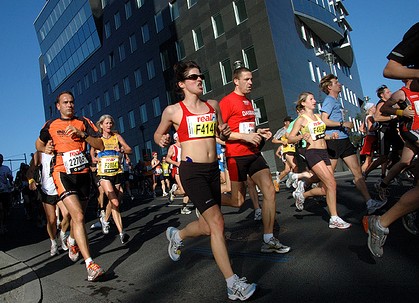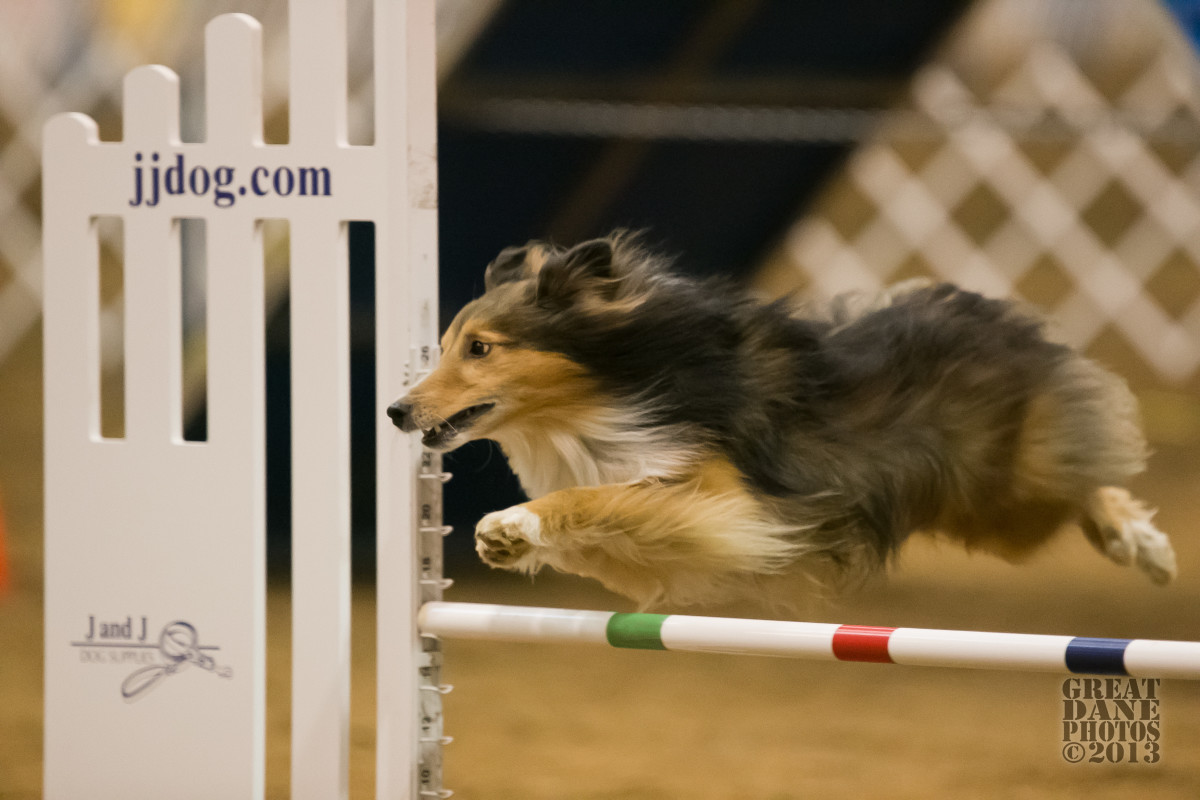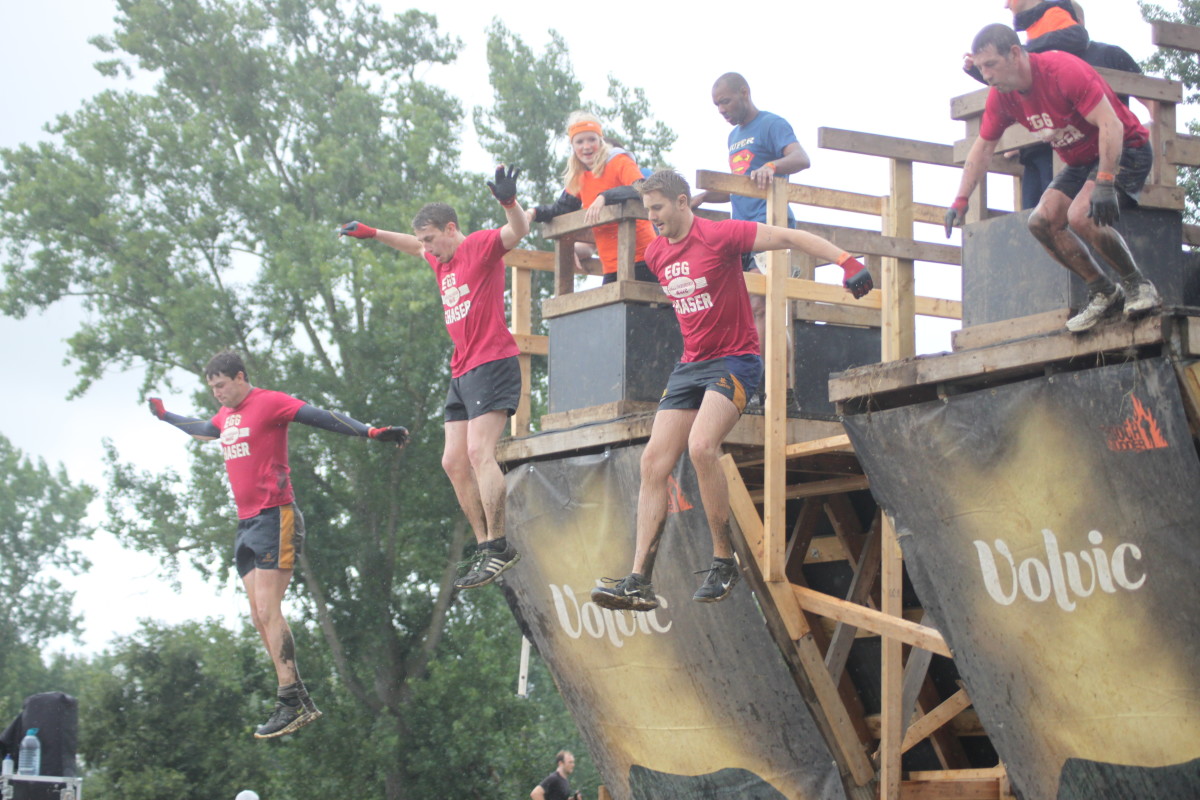What is the "Perfect" Running Form?

Is There Such a Thing?
Biomechanically speaking, yes! However, having the most energy-efficient running form does not always equate to being faster than the next guy. Each person has been developing unique patterns of movement ever since they moved for the first time, so individual and genetic differences play a large role in performance. Here I hope to offer some helpful strategies based on the science of the human body and joint kinematics I have learned as a student of physical therapy. The focus will especially be on long distance running form rather than sprinting, because they are two totally different animals.

Upper Body
When you first think of running, what parts of the body do you think of? Probably legs. But the upper body may be just as important! If managed poorly during your jog, your upper body movement could cost you a lot of excess energy you'll wish you had back by the end of your run. Here are some key principles to keep in mind for quality upper body running form:
1) Reduce trunk rotation. Some is natural, but mainly at the lower trunk and pelvis. If your upper trunk is rotating excessively, your internal and external obliques are working in ways they shouldn't have to.
2) Direct your arm swing forward. Just think, if you're moving forward, you want to maximize the amount of momentum your running form generates going forward. Do not swing your arms across your body. Also realize that some arm swing is desirable for good running form. Keeping your arms stiff at your side will require more work in the long run; and it just looks funny.
3) Swing your arms just enough. Not too much, not too little. A good rule of thumb is to bring your hand to the level of your hip as you swing your arm back and bring the opposite arm's elbow to the level of your opposite hip as you bring that arm forward. This normally provides an optimal level of coordinated momentum.
4) Keep your head and neck stable. Notice I didn't say "stiff." You want your running form to be comfortable, but definitely do not do the "bobblehead." Some people run looking like they're trying out for the music video "I whip my head back and forth..." you're not dancing; you're running.
What is the Farthest You've Ever Ran Without Stopping?
Lower Body
This is the money maker. Your lower body will generate the large majority of the power that is required for good running form. How all the joints work together can get pretty complicated pretty quickly (especially when you consider all the articulations in the foot), so I will try to focus on the essentials here when it comes to lower body running form.
1) Don't land on your forefoot. When your foot is on the ground, you want to make sure your motion resembles a heel-to-toe progression. This does not mean to lengthen your stride to the point that you land right on your heel (slowing you down in the process), but it does mean to avoid landing on your forefoot/toes. That part of your foot was not made to absorb that kind of impact.
2) Think straight ahead. This goes along with something I mentioned in upper body running form. Any amount of force, however small, that you generate in a direction that is not helping move you forward is a waste of energy. Over time, that will really add up. This means swinging your knee forward as your foot follows in the same plane. A common deviation is to allow the foot to swing out as the leg swings forward. Some people may not even realize they do it, so you may even want to ask someone to watch your running form to make sure you are not one of them!
3) Bend your knees. No, I didn't say crouch. I'm talking about bending your knee as your leg swings back. It is very rare for joggers to exhibit a desirable level of knee range, which approaches 90 - 100 degrees of flexion. If you're kicking yourself in the butt, you're overdoing it. Just try to think about adding a few extra degrees of knee bend and see how it goes. It may feel like a lot at first, but as you get used to that running form you will start to notice benefits.
4) Stride length. This will vary depending on the distance you are running and how long your legs are. As long as you are not shuffling your feet or stepping out so far that the ground reaction force from your heel is causing a high-impact landing, you can operate within a certain range to find your happy medium for that particular jog.

Happy Jogging!
Beyond strictly running form, there are other things to consider when going out for a jog, like what type of shoes to wear, what surfaces to run on, where you plan to go, and how you will hydrate. Safety is also a concern if you are running at night, alone, or like to wear earphones to listen to music. Focusing on running form is a good place to start, but don't forget these other important components to experiencing a healthy long distance run. If you get tired of jogging, or just don't have enough time for your usual jog, there are many other ways you can gain quick fitness benefits throughout your day. Be creative in making exercise a lifestyle! What ideas do you have? Please share below.







